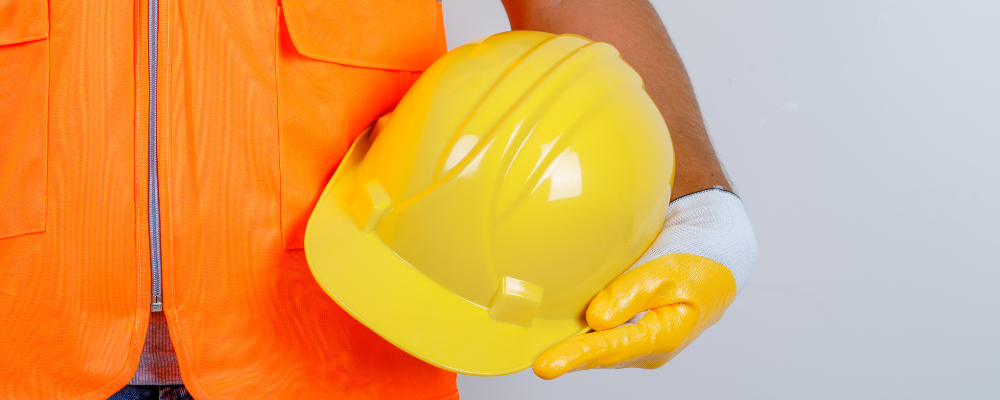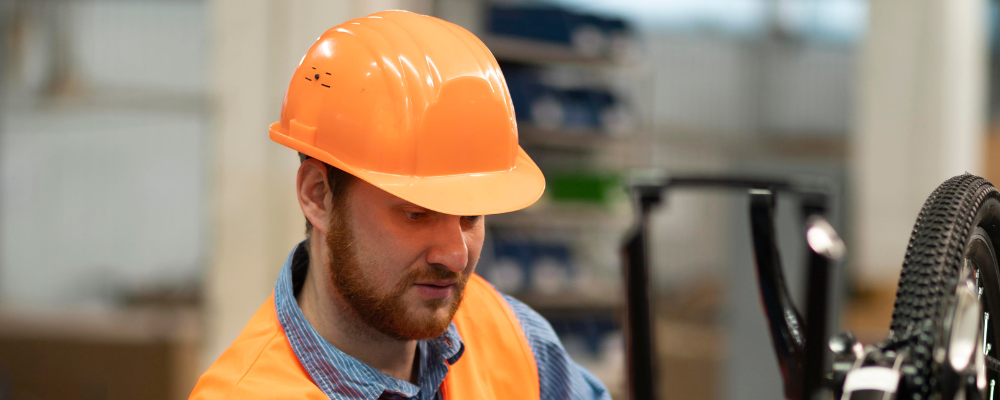
Introduction
In the realm of construction, safety is paramount. Construction sites are rife with potential hazards, making personal protective equipment (PPE) necessary. One critical component of PPE is the Hard Hat Selection, a simple yet indispensable item designed to protect construction workers from head injuries. This in-depth guide will delve into the intricacies of choosing the right hard hat to ensure head-to-toe safety for construction workers.
Understanding the Significance of Head Protection
Construction sites are fraught with dangers ranging from falling debris to low-clearance areas. Head injuries can be life-threatening or result in long-term disabilities. Hence, selecting the appropriate hard hat is crucial.
Types of Hard Hats
- Type I vs. Type II Hard Hats
-
- Type I: Designed to protect against blows to the top of the head.
- Type II: Offers lateral protection in addition to top-of-head protection.
- Classes of Hard Hats
-
- Class G: General hard hats for electrical safety up to 2,200 volts.
- Class E: Provides enhanced electrical protection, up to 20,000 volts.
- Class C: Designed for comfort but without electrical safety.
Material Matters: Understanding the Composition of Hard Hat Selection
Hard Hat Selection is paramount in the construction industry’s commitment to personal protective equipment (PPE). These Hard Hat Selections are pivotal in safeguarding construction workers from head injuries resulting from falling objects, low-clearance areas, and other job site hazards. Regarding Hard Hat Selection, the choice of material is of utmost importance, as it directly influences their performance characteristics. In this comprehensive guide, we delve into the various materials utilized in Hard Hat Selection, with each material offering unique properties tailored to meet distinct safety requirements. Making the right Hard Hat Selection can make all the difference in ensuring the safety and well-being of your workforce, so it’s crucial to understand the available options and their suitability for your specific needs
1. Fiberglass: Lightweight and Durable
Fiberglass is a popular material choice for hard hats due to its lightweight yet durable nature. Here’s why it’s favored:
- Strength and Durability: Fiberglass hard hats are known for their high strength-to-weight ratio. They can withstand heavy impacts, making them suitable for construction sites where falling objects are a concern.
- Lightweight: Despite their impressive strength, fiberglass hard hats are remarkably light. It is crucial for worker comfort during long hours of wear.
- Electrical Insulation: Fiberglass is non-conductive, making these hard hats suitable for environments where electrical hazards exist.
- Resistance to Heat and UV: Fiberglass hard hats resist heat and UV radiation, ensuring longevity even in harsh conditions.
2. ABS (Acrylonitrile Butadiene Styrene): Impact-Resistant Thermoplastic
ABS is another common material used in hard hat construction, known for its impact resistance and versatility:
- Impact Resistance: ABS hard hats offer excellent impact protection, making them suitable for environments where falling objects or head strikes are a concern.
- Thermoplastic Properties: ABS is a thermoplastic material that can be molded into various shapes and designs while retaining its strength.
- Affordability: ABS hard hats are cost-effective, making them a practical choice for businesses looking to equip their workers with reliable head protection without breaking the bank.
3. Polyethylene: Comfortable and Affordable
Polyethylene hard hats are prized for their comfort, affordability, and ease of use:
- Comfort: Polyethylene is known for its comfort, crucial for construction workers who wear their hard hats for extended periods.
- Affordability: These hard hats are often budget-friendly, making them accessible to many workers and employers.
- Lightweight: Polyethylene is inherently light, further enhancing wearer comfort.
4. Composite: Combining the Best of Both Worlds
Composite hard hats are engineered to provide a balanced blend of materials to maximize performance:
- Hybrid Material: Composites typically combine fiberglass or other reinforcing materials with thermoplastics to balance strength, impact resistance, and versatility.
- Customization: Manufacturers can fine-tune the properties of composite hard hats to meet specific safety standards and requirements, offering a tailored solution for various industries and job site conditions.
- Enhanced Durability: Composites are designed to withstand demanding conditions while maintaining a relatively lightweight profile, providing the best of both worlds in protection and comfort.
The choice of material for Hard Hat Selection is critical for ensuring the safety and comfort of construction workers. Fiberglass, ABS, polyethylene, and composite materials each bring unique strengths, catering to different safety requirements and budget considerations. When selecting hard hats for your construction team, it is essential to assess the specific hazards they may encounter and choose the material that best addresses those concerns while ensuring the helmets meet relevant safety standards. Prioritizing the suitable material for hard hats is a proactive step in enhancing workplace safety and protecting the well-being of those on the construction site.

Suspension Systems
The suspension system inside the hard hat plays a pivotal role in comfort and impact absorption. Options include:
- Pin-Lock: Simple and secure.
- Ratchet: Easily adjustable for a snug fit.
- Swing-Ratchet: Combines the benefits of ratchet and swing suspension.
Sizing and Fitment: Ensuring Optimal Protection with the Right Hard Hat Fit
Regarding head protection in the construction industry, the importance of a well-fitted hard hat cannot be overstated. A properly fitted hard hat is not just a matter of comfort but a critical element in ensuring optimal safety for construction workers. This section will delve into the intricacies of sizing and fitment for hard hats, guiding you through the steps to make the right choice.
1. Measuring Your Head
In the process of “Hard Hat Selection,” the initial crucial step involves measuring the circumference of your head. To achieve a properly fitted hard hat, take this measurement above your ears, across your forehead, and around the back of your head. It’s essential to employ a flexible measuring tape for accurate results. Ensure the fit is snug but not overly tight for optimal comfort and safety during your “Hard Hat Selection” process.
2. Choosing the Right Size
Once you have obtained your head circumference measurement, it’s time for Hard Hat Selection. Hard hats come in various sizes to accommodate different head sizes, typically labeled as small, medium, large, and extra-large. Use the following guidelines to choose the correct size:
- Small: Typically fits head circumferences up to 20.5 inches (52 cm).
- Medium: Designed for head circumferences ranging from 20.5 to 22.5 inches (52 to 57 cm).
- Large: Suitable for head circumferences between 22.5 and 24.5 inches (57 to 62 cm).
- Extra-Large: Intended for head circumferences exceeding 24.5 inches (62 cm).
Opting for the appropriate size during your Hard Hat Selection is paramount, as a hard hat that is too small can lead to discomfort and compromise safety, whereas one that is too large may fail to deliver the necessary protection
3. Ensuring a Snug, Comfortable Fit
A well-fitted hard hat should sit comfortably on your head without excessive pressure or tightness. Here are some additional tips to ensure a proper fit:
- The front of the hard hat should rest approximately one inch above your eyebrows, providing unobstructed visibility.
- Adjust the suspension system inside the hard hat to achieve a secure fit. Many hard hats feature suspension systems with adjustable straps or ratchets that allow for fine-tuning the fit.
- Ensure the hard hat feels stable and does not wobble when you move your head. It should stay in place during everyday activities.
- Pay attention to any pressure points or discomfort. A comfortable fit is essential for long hours of wear.
It’s important to note that wearing headgear, such as a beanie or cap, under your hard hat can affect the fit. If you need to wear additional headgear for warmth or other reasons, choose a hard hat size that accommodates it comfortably.
“Hard Hat Selection” is pivotal in head protection within the construction industry. By accurately measuring your head and ensuring a snug yet comfortable fit during the “Hard Hat Selection” process, you can maximize the effectiveness of your hard hat in safeguarding your head from potential hazards on the job site. Prioritizing “Hard Hat Selection” is a proactive step toward ensuring the safety and well-being of construction workers, allowing them to work confidently and securely in hazardous environments. Make the right choice with “Hard Hat Selection” to protect your most valuable asset—your head.

Accessories and Customization
- For added comfort and functionality, consider accessories like sweatbands, chin straps, and visors.
- Customization options for branding and style.
Standards and Certification
Hard Hat Selection must meet safety standards, including ANSI/ISEA Z89.1-2014. Look for certification labels inside the hard hat to ensure compliance.
Inspecting and Maintaining Your Hard Hat
Regular inspection and maintenance are essential:
- Check for cracks, dents, or wear.
- Replace damaged or expired hard hats promptly.
- Clean according to manufacturer guidelines.
Visit our page for more products like
DAX JUNGLE CARBON FIBER FULL BRIM HARDHAT
Conclusion
Choosing the right hard hat for construction workers is not to be taken lightly. It involves carefully considering types, classes, materials, suspension systems, fitment, and maintenance. By prioritizing head protection, construction workers can confidently tackle their tasks with peace of mind, knowing they have made an informed choice in safeguarding their well-being on the job site.
Remember, safety is paramount on construction sites. Ensure your construction workers have the best head protection to ensure their safety from head to toe.
For more information, visit our website and Facebook page.









